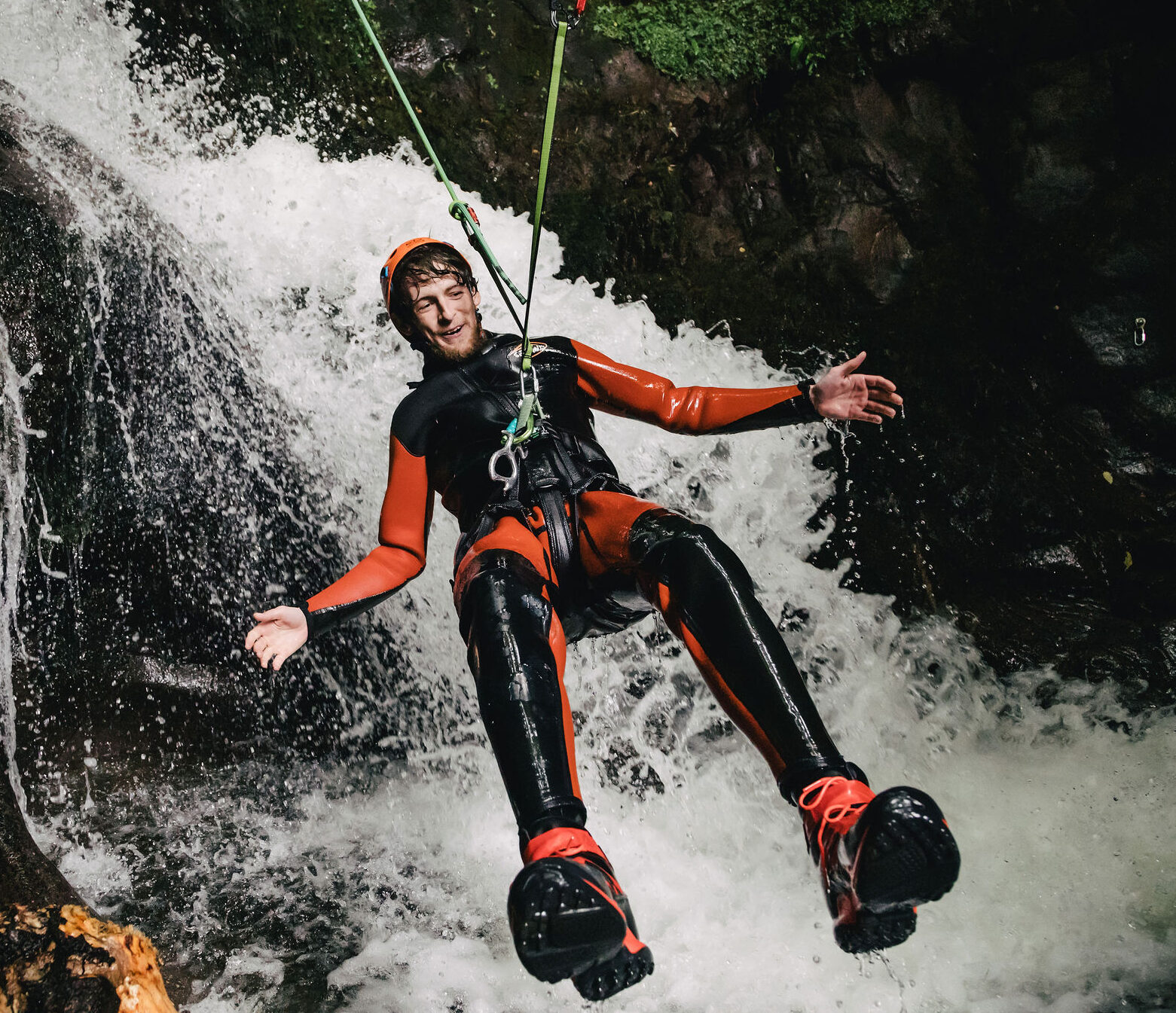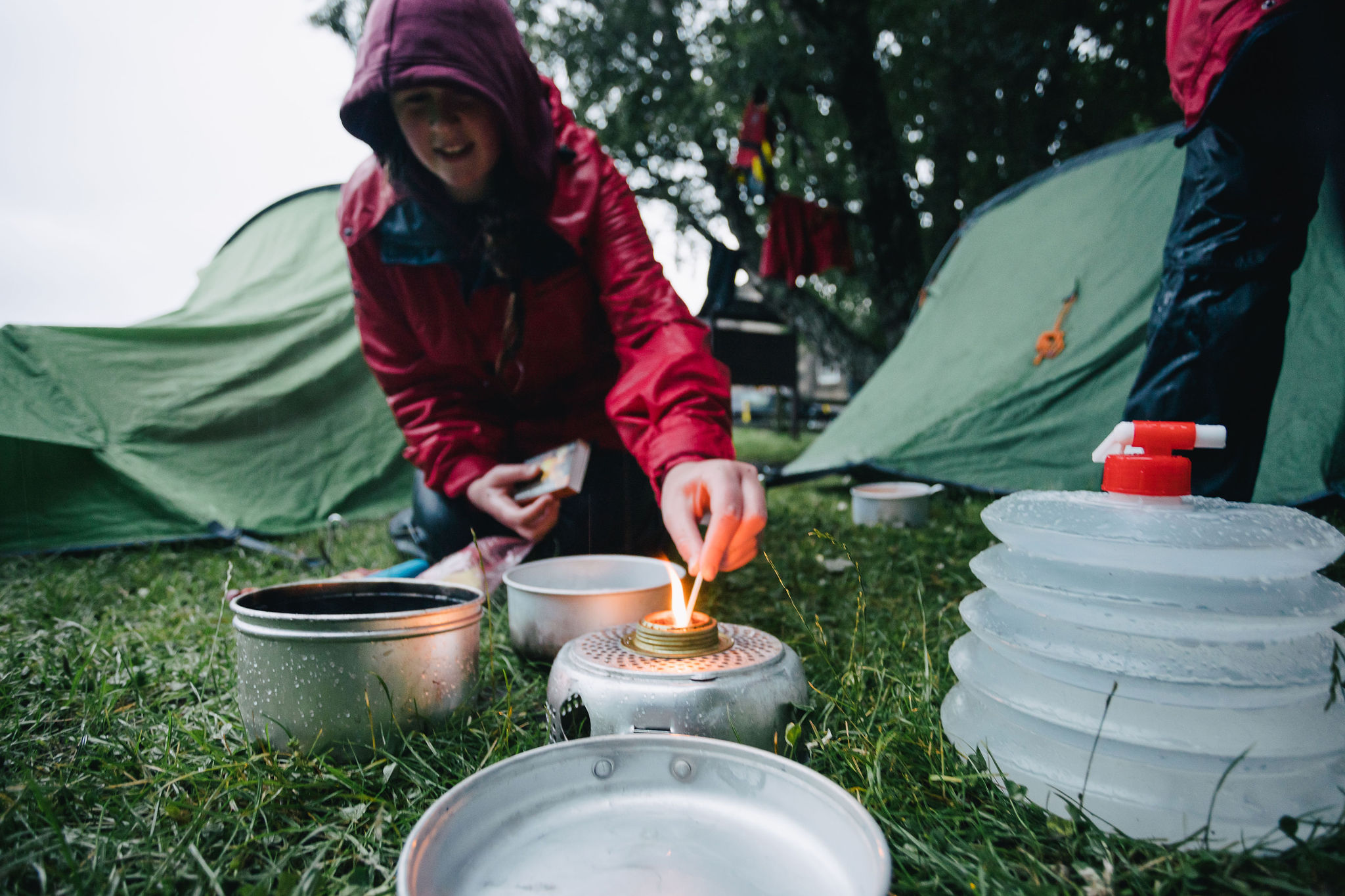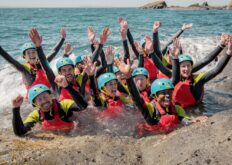Duke of Edinburgh Award Expedition – Essential Equipment List

The Duke of Edinburgh (DofE) award is a prestigious programme that encourages young people to develop skills for life and work. Founded in the United Kingdom in 1956 by Prince Philip, Duke of Edinburgh. The program, operating in over 130 countries and territories, aims to encourage and challenge young people aged 14 to 24 to build confidence, resilience and practical skills through various activities and challenges.
The program consists of three progressive levels: Bronze, Silver and Gold. Each level has specific requirements in four sections: Volunteering, Physical, Skills and Expedition.
At MY Adventure we are a provider that delivers the expedition phase of the Duke of Edinburgh Award for schools and private groups across Scotland. We are always asked by participants and parents “What is the best equipment to purchase for their expedition?”. Based on our years of experience this is the MY Adventure comprehensive guide to: Essential Duke of Edinburgh Award Equipment!
Below we will give you are breakdown of the follow gear:
- Backpacks
- Tents
- Sleeping Bags
- Roll Matts
- Cooking Equipment
- Hydration Options
- Waterproofs & Technical Clothing
- Boots
- Acessories

While the specific kit requirements can vary depending on the environment, duration, and activities involved in the expedition, here is our general guide to some essential items that you should consider including in your DofE kit:
Backpack:
A durable, comfortable backpack that fits properly and can carry all necessary gear is essential. On your expedition you have to carry all your kit, so a good backpack is essential for making your adventure more comfortable and fun.
Things you should look for when you’re buying a backpack:
Size – 60-70L
Waterproof – Keeping your kit dry is the most important attribute to making your expedition more enjoyable.
Waist straps – Waist straps allow you to carry the majority of your weight on your waist instead of your shoulders – meaning you’ll barely feel the weight of your kit. This helps prevent getting a sore neck and back on expedition.
Compartments – Having different compartments allows you to keep kit organised so when you have to grab something quickly on an expedition, you don’t have to rummage to the bottom of your bag to find it. Having different compartments also allows you to keep larger kit like your tent and sleeping bag separate, so you can keep those dry and packed up until you need them in the evening.
Tips:
- There are female & male backpacks, this is so the backpack fits body shapes correctly- it’s important to get a bag that fits your body shape.
- Use ‘Dry Bags’ as a method of keeping kit organised and dry.
- For more information check out this blog on the Duke of Edinburgh Award website: Here
We recommend:
Tent:
Although your tent is likely to be provided by your DofE expedition provider, it is a good idea to check these are not damaged/ missing any parts before your expedition. If you’re looking to buy a tent, make sure it is lightweight and weather-resistant, to ensure it is suitable for the conditions you will encounter.
Things to look for when you’re buying a tent:
Waterproof/ weather resistant: You never know what weather you will be up against on your expedition. A tent has to keep you warm and dry to ensure you get a good night sleep before another adventurous day.
Easy to pitch: Whether you’re up against some extreme weather, getting eaten by midges or you’re ready for bed, a tent that is easy to pitch will make your expedition life much easier.
Top tip:
- Your tent will be packed into different bags e.g inner tent in one bag, poles and pegs in another-split the weight with your teammates by dividing each bag per person.
- Keep all of the individual tent bags in the pocket inside the pitched tent- they are easy to lose amongst everyone’s kit.
We Recommend:
Sleeping bag and sleeping mat:
Your sleeping bag is your bed away from home, you need to make sure your sleeping bag will keep you warm enough for the expected temperature.
Things to look for when you’re buying a sleeping bag:
Warmth– A sleeping bag that will keep you warm is important to ensure you have a good night’s rest. Sleeping bags are rated by season, consider when your expedition is taking place when you buy your sleeping bag. An outdoor sleeping bag is usually made of a synthetic or down material.
Synthetic
- Cheaper
- Good insulation
- Considerably heavier
Down
- Lightweight
- Compact
- Better Insulation
- More expensive than synthetic and must be kept dry
Hood– Look for a sleeping bag that has a hood and a drawstring- you lose the majority of your heat from your head so keeping your head warm will keep you warm.
Compact– Your sleeping bag (along with your tent), is the largest piece of kit that you have to carry- having a compact sleeping bag will give you more space to keep your other kit organised.
Top tips-
- You can find temperature and season ratings on the inside of the zip on most sleeping bags.
1 or 2 -Lightweight, compact, and ideal for use in summer months.
3 – for use in early spring to late autumn.
4 or 5 – Thick sleeping bags, for use in winter or extreme cold conditions.
- If you have any wet socks, t-shirts or jumpers, keep them at the bottom of your sleeping bag when you sleep- your body heat will help dry them o for the next day.
- Pack your sleeping bag at the bottom of your bag, you don’t need this until the evening, so keep it dry and out of the way at the bottom of your bag.
- Use a sleeping bag liner for extra warmth- they are cheap and lightweight.
We recommend:
Roll Mat:
A roll mat is used underneath your sleeping bag, in your tent to prevent moisture rising from the ground and to keep you warm and dry- the ground temperature is a lot colder than the air temperature.Things to look for when buying a roll mat:
Lightweight- Make sure you use a sleeping mat designed for outdoor use. A good quality self-inating mat is a wise investment- it’s important to get a good sleep on expedition.
Top tip:
- Yoga mats do not have the same durability or insulation and aren’t suitable for sleeping outdoors
We recommend:
Cooking Equipment
Food is a vital piece of kit people disregard, yet it is one of the most important to keep you energised for the duration of your expedition. On expedition, you are expected to prepare and cook your meals yourself, so you’re looking for cooking equipment that is easy to use, lightweight and compact. You will need a compact stove, fuel, and lightweight cooking utensils for preparing meals, this allows you to be as fast as possible when preparing your meal.
Top tips:
- Aim for 3000-5000 calories per person per day
- Dried, cured, smoked or vegetarian foods will usually last the best
- Pack your food in waterproof and durable packing so it will stand up to being squashed, soaked or sat on
- Keep weight and litter down by removing packaging before your expedition hashtag leave no trace
- Avoid- glass, tinned food, refrigerated food, crisps, eggs and energy drinks.
- Tips for choosing your expedition food:
We recommend:
Hydration Methods
As a rule of thumb, you should be drinking 2L of water a day, however, if the forecast is for hot weather, you should aim for more (1L extra per day). Staying hydrated on expedition is important to keep on top of. There are two options for carrying your water: A water bottle or a ‘Bladder’
Things to look for when buying a water bottle:
– Aim for a 2L size- this should provide you with enough liquid to last you throughout the day and prevents the likelihood of having to top up your water in rivers/ waterfalls.
A ‘Bladder’ is a reservoir of water stored in a bag with a ‘hose’ coming o it, which allows you to drink completely hands free. A bladder allows you to drink small amounts of water throughout the day, without having to make stops to pull out a water bottle. They are also less bulky and easier to pack.
Top tips:
- Your water bottle should be a minimum of 2L
- Make sure your bottle doesn’t leak before your expedition
- Pack your water bottle away from the back of your backpack, to prevent it sticking into yourbag or hip.
We recommend:
Waterproof:
Waterproofs are a vital piece of equipment to keep you warm and dry. Your waterproofs should be durable, lightweight and breathable to prevent any moisture building inside your jacket.
Jacket: Your waterproof should have a full length zip at the front of your jacket for easy removal. Trousers: Your waterproof trousers should be wide tting so you can t them over your walking boots so you can take your outer trousers o when you’re on the move.
Top Tips:
- Avoid ‘water resistant’ outer clothing- this material is not as durable and is unlikely to keep you dry in a heavy rain-shower
- Avoid ‘3 in 1’ layers jackets so you can manage your temperature with dierent layers.
- Waterproof trousers that button at the bottom are best for slipping on over walking boots
We recommend:
Technical Clothing
Appropriate clothing for the environment, including quick-drying, moisture-wicking base layers, insulating mid-layers, and waterproof outer layers. Don’t forget spare clothes and extra socks. Layering your clothing helps you manage your temperature and keeps you comfortable on your expedition.
Things to look for when buying technical clothing:
Midlayer– Your midlayer should be insulating, breathable and quick drying in order to keep you warm. Aim for eece material when buying your midlayer, it should have a full-zip or quarter- zip, you are likely to be taking your mid-layer on and o as your temperature changes as you move.
Baselayer– Your baselayer should be lightweight and breathable.
Trousers– You are looking for lightweight trousers that are comfortable to move in. Lightweight trousers are easier to pack and dry quicker which prevents chang and getting cold.
Top tips
- Avoid cotton and denim- jeans and joggers are not suitable for expeditions, they are heavy anddry slowly when wet.
- Pack spare socks- it can sometimes be unavoidable getting wet feet when you are walkingthrough hills and moorland. Having dry socks keeps your feet warm and prevents you from getting painful blisters.
We recommend:
Walking Boots & Socks
Getting the correct boots and socks is essential in making your expedition more comfortable- especially if your expedition is on foot. Choosing your walking boots can be overwhelming as you can be met with a wide range of brands, fabrics and styles.
Things to look for (boots):
Durability– Leather boots are generally more sturdy and last longer, however can be more costly- especially if your feet are still growing. If you’re only planning on wearing your boots for your DofE expedition, a pair of good-quality fabric boots will do the job, make sure they are waterproof and t your feet properly.
Waterproof– Keeping your feet as dry as possible on expedition is essential for comfort and to prevent blisters. Make sure your boots are ‘waterproof’ not ‘water resistant’.
We Recommend:
Socks:
Walking socks are designed to minimise blisters by having padding and moisture protection fabric. There are different weights of socks for different seasons- a midweight sock will be suitable to wear anytime in the year. Hiking socks will ensure your feet stay dry and ventilated, reducing the risk of fungal
Top tips:
- Take a blister kit and make sure it’s easy to reach when walking. Prevention is better than cure, so put some plasters on where you’ve had blisters before to protect your feet
- ‘Break in’ your boots- wear your boots around the house so your boots are softer and your feet are comfortable before your expedition
Other Kit:
First Aid kit-
A well-stocked rst aid kit containing essential medical supplies and any personal medications you might need. Keep your rst aid kit packed at the top of your rucksack so it is easily accessible in an emergency.
Headlamp:
A reliable and bright light source for navigating in low-light conditions. Remember to pack spare batteries
Navigation tools:
A map and compass, along with the necessary skills to use them eectively. A GPS device can be useful but should not be relied upon as the sole means of navigation.
It’s important to pack lightweight and compact items to minimise the weight of your backpack. Researching the specic requirements and recommendations provided by the Duke of Edinburgh’s Award program is crucial to ensure that your kit meets the necessary standards and safety guidelines.
Always remember to prioritise safety and preparedness while packing your DofE kit. Conduct thorough research, consider the terrain and weather conditions you’ll be facing, and consult with experienced hikers or DofE coordinators to ensure you have all the necessary items for a successful expedition.
MY Adventure and Intrepidus Outdoors are adventure tours and outdoor experience providers, both based in Edinburgh, Scotland. We specialise in private and open canyoning, coasteering, mountain biking and hill walking tours, and deliver these adventurous experiences across Scotland. We are also a provider of the Duke of Edinburgh Award Expeditions where we run bronze, silver and gold level awards for young people.
If you enjoyed this blog article and are looking for additional information about adventures from Edinburgh, we have published a number of other blogs:
- 6 Steps to be happy like a Scott: here
- The best breakfast spots in Edinburgh: here
- The best hotels and hostels in Edinburgh: here
- Stag Party Adventures Edinburgh: here
- Planning a Hen Party to Edinburgh: here
- Top Tips for Backpacking in Scotland: here
- Edinburgh Stag Party Ideas: here
- Hen Party Adventures Edinburgh: here
- Stag Party Outdoor Adventures Edinburgh Essentials: here
If you haven’t already seen it, check out the Intrepidus Outdoors Trip Advisor, Youtube channel, Visit Scotland page and blog to hear about how others found their outdoor adventures with us!




